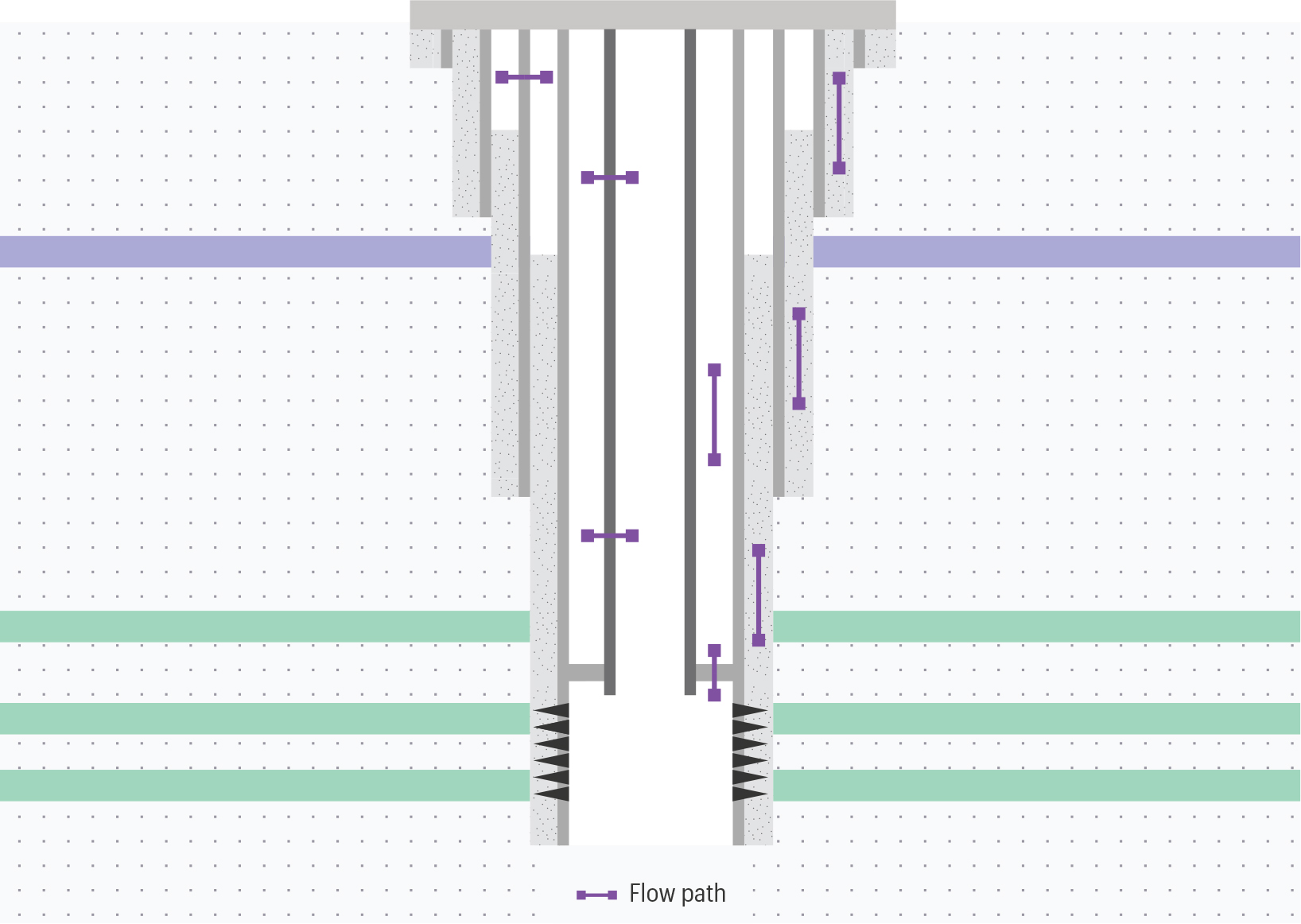A routine field survey discovered gas bubbling in the cellar of the subject well, right behind the conductor. None of the annuli in the well exhibited sustained pressure, complicating the task of locating the source and flowpath of the gas. The operator needed reliable diagnostic information to plan and target a remedial workover.
Analysis of cement bond and variable density logs (CBL/VDL) indicated a very poor cement bond behind the 9⅝ in. casing and, in the 9⅝ in. × 13⅜ in. pipe section overlap, there was no cement at all. After performing a pressure test of the annular space between the production tubing and the casing, and analysing samples of the bubbling gas, it was determined that the gas was coming from both the producing formation and a shallower formation.


